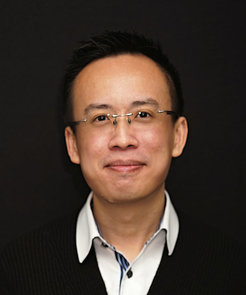Dr. David Ng

David pursued his chemistry studies at the National University of Singapore and received his B.Sc. degree with first class honours in 2009. In 2010, he accepted a scholarship offered by the Max Planck Institute for Polymer Research (MPIP) and moved to Ulm under the supervision of Prof. Tanja Weil. David graduated with summa cum laude in 2014 and worked as a junior group leader in the Institute of Organic Chemistry III at Ulm University. He subsequently moved to the MPIP and leads the synthetic life-like systems group focusing on precision biohybrids and synthetic supramolecular concepts in living cells. Since 2021, David takes the helm of the BioCore Facility of the MPIP as a concurrent portfolio. He was featured in 2019 and 2022 in international peer-reviewed journals of the German Chemical Society & the Royal Society of Chemistry as an emerging key figure for material science at the chemistry/biology interface.
Research Interest
Controlling Function in Biology through Synthetic Chemical and Supramolecular Concepts
Self-organization in Nature is a phenomenon where molecules form transient supramolecular structures governed by dynamic chemical bonds. To understand how different chemical bonds translate into structural order and function in biology, we combine organic and peptide chemistry to create small molecules that can transform into different types of nanostructures on demand. We study how the chemical kinetics, equilibrium and non-equilibrium pathways affects cellular processes and thus changing their behavior.
Within this topic, scientists within the group learn and combine cell biology, supramolecular and organic chemistry in order to design, synthesize and control both the time and location of structural transformation. We aim to use these concepts to provide technological discoveries in fundamental science that open doors towards new therapeutic solutions.
Engineering Nanoscale Biointerfaces
The core focus of this topic uses the architectural perfection of biomacromolecules such as proteins and DNA to provide a framework around polymer chemistry. Nanoscale structures such as DNA origamis and denatured proteins offer a monodisperse template with pre-determined geometry and chemistry. By programming this orientation of functional group exposure on the macromolecular structure, polymerization reactions can be spatially controlled to create geometrical objects that are not achievable through conventional means.
In addition, these hybrid structures can be made functional and responsive depending on the chemistry that is chosen for both the polymerization and synthetic motifs. We collaborate extensively to investigate the influence of shape persistency in biomedicine and physiological environments.
